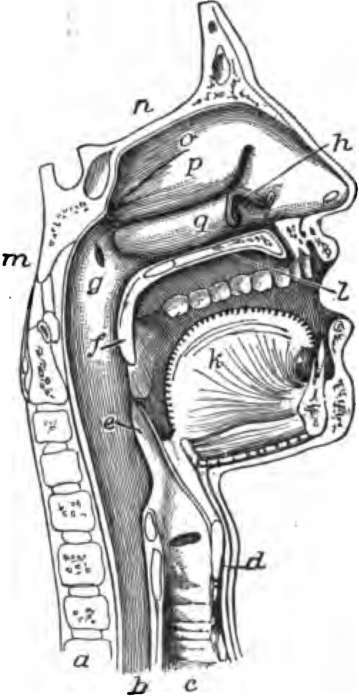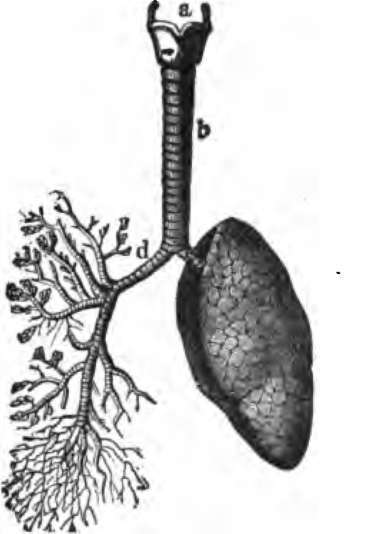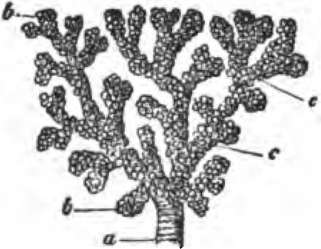The Air Passages In Human Body
Description
This section is from the book "The Human Body: An Elementary Text-Book Of Anatomy, Physiology, And Hygiene", by H. Newell Martin. Also available from Amazon: The Human Body.
The Air Passages In Human Body
Air reaches the pharynx through the nose or mouth (Fig. 1): on the ventral side of the pharynx (Fig. 41) is an aperture through which it passes into the larynx or voice-box (a, Fig. 64), which lies in the upper part of the neck. From the larynx air passes on through the windpipe or trachea; this enters the chest, in the upper part of which it divides into a right and a left bronchus. Each bronchus enters a lung, and divides in it into a vast number of very small tubes, called the bronchial tubes. The last and smallest bronchial tubes (a, Fig. 65) open into subdivided elastic sacs, b, c, with pouched walls.
What vessels form a close network in the lungs? What takes place through the walls of these vessels? Why must the air in the lungs be renewed? How is the renewal brought about? What is breathing? What happens when the chest contracts? What when it expands ?
Enumerate the respiratory organs.
Through what passages does air reach the pharynx?


* To these should be added (5) the nerve centres and nerves which control the muscles of respiration, and which will be subsequently considered (sea Chap. XX).

Fig. 64. The lungs and air-passages seen from the front. On the left of the figure the pulmonary tissue has been dissected away to show the ramifications of the bronchial tubes, a, larynx ; b, trachea; d, right bronchus. The left bronchus is seen entering the root of its lung.

Fig. 65. A small bronchial tube, a, dividing into its terminal branches, c; thes, have pouched or sacculated walls and end in the sacculated alveoli, b.
What aperture is found on the ventral side of the pharynx? Where does the larynx lie? Where does the air go from the larynx? Into what does the trachea divide? Where? What are the bronchial tubes? How do the final bronchial tubes terminate?
Continue to:
